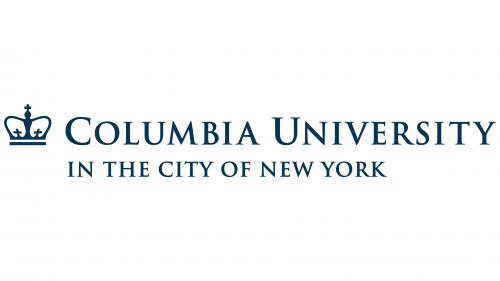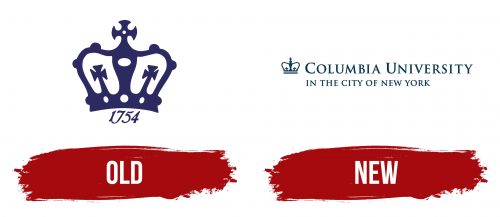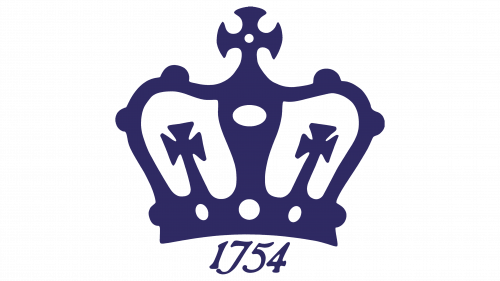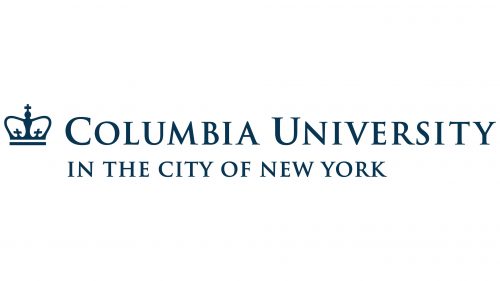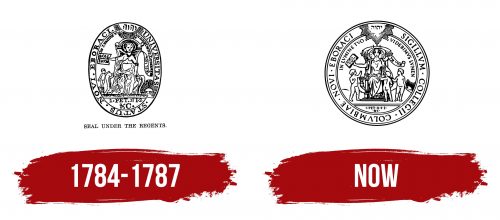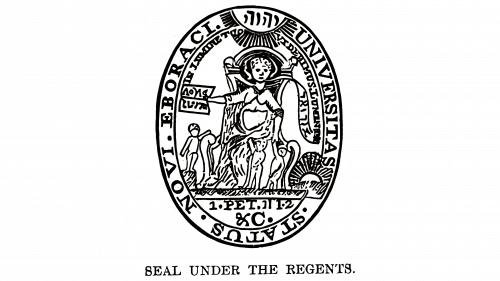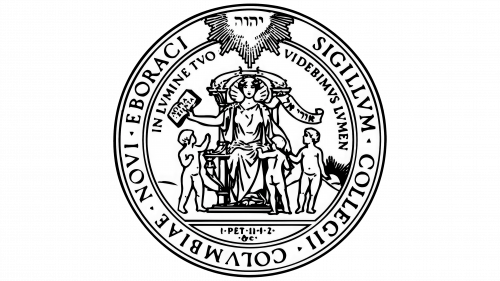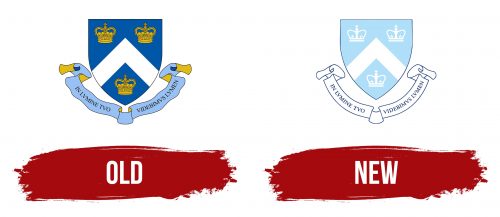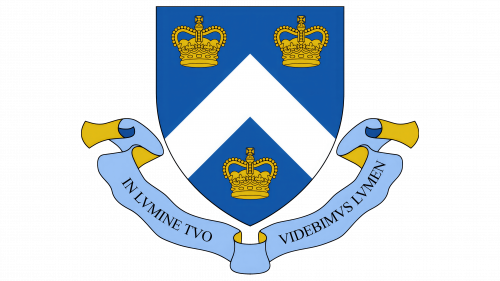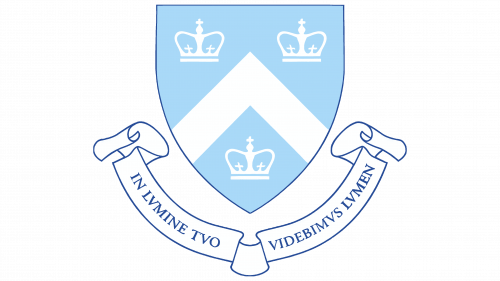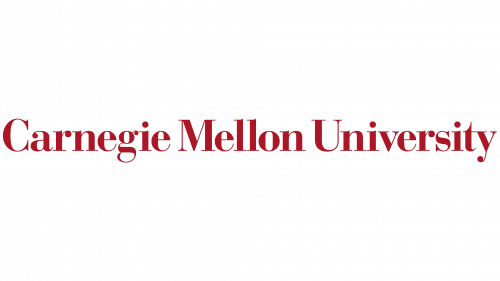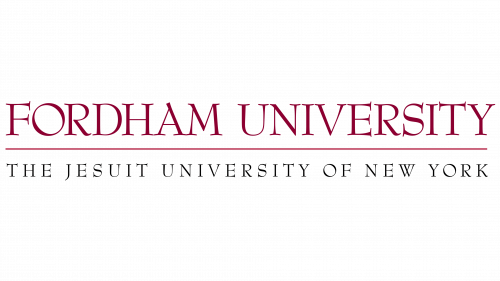The Columbia University logo is serious and austere, with a touch of regal grandeur. It embodies everything—from history to modernity—presented subtly and infused with an aristocratic spirit. Every detail of its visual identity is designed to inspire the best qualities in a person.
Columbia University: Brand overview
One of the most prominent and ancient universities in the country, Columbia University has a long and illustrious history that dates back to the American colonial era. The university was first formed in 1754 as King’s College, according to a royal charter granted by King George II. It is the oldest college in New York State and the fifth oldest in the country. The college’s original home was a Manhattan building owned by Trinity Church.
The first class of King’s College had just eight students, and Samuel Johnson served as its first president. Despite its tiny size, the college immediately established a reputation for having high academic standards.
The fate of the college was profoundly affected by the American Revolution. When the War for Independence broke out in 1776, King’s College ceased its classes and converted its structure into a military hospital.
The college was renamed Columbia College in 1784, the year the war ended, in remembrance of Columbia, a poetic name for America. This modification represented the country’s aspiration to break free from its ties to monarchy and its newfound independence.
Early in the 1800s, the institution started to grow. The medical school was established in 1814, making it one of the first in the country. The college relocated to a new location at 49th Street and Park Avenue in 1858, making room for more students and academic offerings.
Frederick A.P. Barnard presided over the institution from 1864 to 1889. Under his direction, the school grew from a modest college into a major research university and greatly increased its academic offerings.
The institution relocated again in 1896 to its present site in Manhattan’s Morningside Heights district, opening a new chapter in its history.
The university’s formal name was changed to Columbia University in 1897 to reflect its expanding stature and goals. Several new educational institutions were established during this period, including the Business School in 1916 and the School of Journalism in 1912.
The institution saw substantial growth and development over the 20th century. The school rose to prominence as one of the top research hubs in the world, home to many eminent academics, authors, and public personalities.
The university’s role in the Manhattan Project during World War II demonstrated the city’s significance as a hub for science.
Student protests occurred at the institution in the 1950s and 1960s, particularly during the Vietnam War and the civil rights movement. These events greatly impacted the university’s politics and culture.
This university was among the first prestigious American institutions to accept women onto its main campus in 1983.
Significant growth in the research capacity occurred in the 1980s and 1990s. The Earth Institute was founded in 1995, while the Center for Theoretical Physics was founded in 1990, among other new research centers and institutions.
The university’s endowment saw notable growth in the 1990s, making more money available for research and scholarship initiatives. By the decade’s end, it had reached over $4 billion.
The school launched a major expansion initiative after Lee Bollinger was appointed university president in 2002. In 2003, a development plan for a new campus north of the Morningside Heights main campus in the Manhattanville region was unveiled.
In 2006, with a $4 billion goal, the institution initiated its biggest fundraising effort. The campaign ended in 2013, having raised more than $6 billion.
The school greatly increased its global reach in 2007 by opening global centers in Beijing, Paris, and Mumbai, among other locations.
One of the campus’s iconic buildings, the historic Butler Library, underwent renovations that were finished in 2010.
The Northwest Corner Building, a cutting-edge multidisciplinary science center, opened for business in 2011 and quickly became a crucial component of the research infrastructure.
The new Manhattanville campus of the university opened its doors in 2016 and features state-of-the-art teaching and research facilities for multiple faculties.
During this time, the school consistently ranked among the top 10 institutions worldwide, solidifying its place in international university rankings.
Additionally, the institution kept drawing in top-notch professors and researchers. During this time, two professors—Richard Axel (Medicine, 2004) and Martin Chalfie (Chemistry, 2008)—were awarded Nobel Prizes.
The university maintained strong linkages to the humanities and social sciences while aggressively expanding its STEM (science, technology, engineering, and mathematics) programs.
The Columbia School of Journalism oversees the Pulitzer Prize, which celebrated its 100th anniversary in 2017 with a celebration held on campus.
The institution has also continued to improve its financial aid programs, hoping to provide bright students with access to higher education regardless of their financial situation.
The school held several activities and talks in 2018 to commemorate the 50th anniversary of the 1968 student demonstrations, highlighting the significance of this momentous occasion for its identity.
The Business School’s new Manhattanville campus opened in the same year, greatly increasing the options for business education.
The Columbia World Projects program was introduced in 2019 to use academic research to address global issues. This program demonstrated dedication to the useful application of scientific knowledge.
Despite obstacles worldwide, the institution conducted research in 2020 and was instrumental in examining several facets of the epidemic and its aftermath.
2021 was a year filled with several noteworthy accomplishments. The work of the school’s scientists has greatly benefited artificial intelligence and quantum computing. The institution also improved its courses on sustainable development and climate change.
In 2022, the institution initiated a new program to increase interdisciplinary research, bringing together experts from different disciplines to address challenging issues.
The university continued growing its online presence by creating online curricula and integrating cutting-edge technology into the classroom.
To foster a more diverse and equitable learning environment, the institution also bolstered its initiatives related to inclusion and diversity.
The school maintained its reputation in numerous academic domains by drawing in top-notch instructors and students.
Over the years, the university has produced many eminent people, including Nobel laureates, famous academics, prominent artists, and presidents of the United States.
Columbia University’s sports teams are known as the Columbia Lions. The Lions represent the university in NCAA Division I as part of the Ivy League and compete in various sports, including basketball, football, and rowing. The lion mascot symbolizes strength and pride, qualities the athletes and fans hold in high regard.
The institution is still growing, preserving its customs while adjusting to the new demands of contemporary science and education. It continues to be one of the world’s top research and educational centers, significantly influencing the intellectual and cultural landscapes of the United States and the rest of the globe.
Meaning and History
What is Columbia University?
It is a university located in the center of New York City. It ranks among the top universities in the United States, offering undergraduate, graduate, and professional students a wide range of programs in fields such as engineering, medicine, arts, and science. The university is characterized by high academic standards and a vibrant urban learning environment where students interact with top-notch faculty and enjoy Manhattan’s cultural diversity, access to prestigious libraries, and cutting-edge research resources. The university draws students from around the world, attracted by the opportunity to study in one of the world’s most dynamic cities, and its historic ivy-covered buildings are juxtaposed with state-of-the-art research centers.
Old
The Columbia University emblem features a crown, the primary symbol of royal authority. It affirms the university’s unique identity and hints at the impeccable education that can be obtained within its walls. Its key characteristics are minimalism, lightness, and refinement.
The crown is square, drawn with broad lines that create open spaces, giving it a lacy appearance. The side bulges are intended as spots where gemstones would be set, so the crown is perceived as a priceless adornment. At the top sits a large cross in the Templar style.
There is also a cross on each side, resembling shortened cross pattées with wide arms tapering toward the center. A long stem, merging with the base, supports them. However, this logo includes two elements:
- an imperial crown;
- the founding year (1754).
The date is written at the bottom, discreetly nestled under an arched line. It is rendered in Old English glyphs—elegant, italic, with smooth alternations of thins and thicks. Large dots at the ends of some numerals add an antique and noble look to the inscription.
The emblem is dark blue, similar to royal blue, perfectly aligning with exclusivity, high society, prestige, and exquisite taste. This is precisely what Columbia University strives for, aiming to highlight its impeccable reputation.
New
The theme of superiority and royal refinement continues in the updated Columbia University logo, where the crown is once again the central element. It opens the composition, majestically rising next to the university’s name. This time, there is no hint of a Templar order, as the top cross lacks rounded edges; instead, they are straight, smooth, and precise, forming 90-degree angles. The cross sits atop a small sphere resembling an orb, which appears as another symbol of supreme authority.
The side crosses now have shorter stems, creating more open space and making the crown airy and delicate. To the right and left of the center are two arcs that gently curve downward, connecting the top to the base. Beneath it is a solid horizontal bar—moderately wide, resembling an elongated rectangle. All elements are colored in a distinct shade called Columbia Blue (developed based on the palette of the Philolexian Society).
The university’s name occupies the right side of the emblem. The “Columbia University” inscription is stretched into a single line with wide spacing between letters. Although the text is in uppercase, the first letters of each word stand out with a larger size. The glyphs are adorned with small but sharp serifs, lending elegance to the visual identity.
The university conveys the idea of an outstanding education at one of America’s finest institutions through simple graphic elements. It showcases its long history, authenticity, and nobility. After all, the original building was adorned with a copper crown, first used at the college’s inception and now closely tied to the university’s identity. This logo exudes refinement and aristocracy.
The Seal
The seal of Columbia University is a distinguished symbol representing the institution’s commitment to knowledge, learning, and historical legacy. The design features the university motto, “In lumine tuo videbimus lumen,” which translates from Latin as “In your light, we shall see light,” reflecting the pursuit of enlightenment and wisdom. Traditionally, the seal includes symbols like an open Bible, highlighting the importance of scholarship, and it is surrounded by classical imagery that speaks to the university’s rich heritage since its founding in 1754. The Columbia seal remains an emblem of academic excellence and integrity.
1784 – 1787
The Columbia University seal is a sacred symbol that the institution still uses to authorize academic documents. It is also depicted as a bas-relief on one of the interior walls, underscoring its significant role in the university’s history.
The theme of this emblem is religious and moralistic. It presents a scene with a Lady seated on a throne, symbolizing a seat of state. Gathered around her are children she teaches to approach the pursuit of wisdom rightly. The Lady holds one student’s hand, signaling her intention to guide him toward virtue and truth. She also holds a sheet with the Greek inscription “ΛΌΓΙΑ ΖῶΝΤΑ,” which translates into English as “living or lively Oracles.” This phrase is taken from the Holy Scriptures (Acts 7:38), where it serves as an epithet.
To the left of the throne, a ribbon bears the Hebrew words “אוּרִיאֵל” (God is my light), hinting at the idea that learning is light, while ignorance is darkness. This is why the Lady aims to enlighten the children. A sun rises at the chair’s base as a testament to the belief that education brings light. Above the Lady’s head are thin rays, intersecting with the motto “In Lumine Tuo Videbimus Lumen.” This is taken from Ps. 36:9 and means, “In thy light shall we see light.”
Around the edge of the vertical oval runs another inscription: “UNIVERSITAS · STATUS · NOVI · EBORACI,” which translates as “State University of New York.” All letters are bold and uppercase and feature fine serifs.
Now
Once again, the updated Columbia University seal features the Lady, now depicted in a different style—more modern, light, and clear. She sits on a high throne and looks forward, holding an open book in her right hand with the Greek words “ΛΌΓΙΑ ΖῶΝΤΑ.” This phrase is from the Holy Scriptures (Acts 7:38) and translates as “living or lively Oracles.” Three children stand nearby, receiving her guidance on the importance of education to emerge from the darkness of ignorance into the bright world of knowledge.
A broad ribbon extends from the back of the chair, ending in a curl with an additional inscription underscoring the necessity of education. To the right of the Lady and above her are fragments of a sun with rays, symbolizing the light of learning. In the upper half, there is another phrase in an arc, in Latin, reading “In Lumine Tuo Videbimus Lumen,” further emphasizing the importance of light (enlightenment) in people’s lives.
Completing the composition is a wide ring with the name of the institution to which the seal belongs. It reads in uppercase serif letters, “SIGILLVM COLLEGII COLVMBIAE NOVI EBORACI.” To prevent the large words from merging, interpunct dots are placed between them. As before, the seal is drawn with fine black contour lines. It is calm, imposing, and moralistic.
The Shield
The shield of Columbia University serves as a formal emblem of the university’s identity and heritage. It typically features a crown, symbolizing Columbia’s origins under King’s College and representing authority and honor. The shield’s design reflects the university’s commitment to leadership and intellectual pursuit and its historical roots dating back to 1754. Used on official documents, ceremonies, and branding, the Columbia shield marks the institution’s legacy and dedication to knowledge and advancement.
Old
The Columbia University coat of arms pays homage to tradition and is an unofficial symbol for use on anything associated with the institution. It replaced the seal, which is reserved for important administrative documents.
The coat of arms is based on a triangular heraldic shield inspired by the personal coat of arms of Samuel Johnson, an American linguist, educator, philosopher, and historian. The design features three miniature crowns, representing the university’s oldest symbol, originating from King’s College. Thus, the crown thanked His Majesty for granting permission to establish the institution.
The shield also contains a white triangular stripe pointing upward, dividing the space into two unequal parts. Below is a flowing ribbon inscribed with the university’s Latin motto: “In Lumine Tuo Videbimus Lumen,” which translates to “In thy light shall we see light.” This motto is rendered in bold serif type with short but sharp serifs.
The coat of arms is colored in three shades: light blue (Azure), dark blue (Columbia Blue), and yellow (Or). Together, these colors create an atmosphere of refinement. The golden color conveys a sense of nobility, symbolizing the shine of a precious metal. White, a neutral and traditional school color, is used in small amounts in this design.
New
The drive for minimalism in visual identity due to digital advancements has created a simplified coat of arms for Columbia University. Despite heraldic elements, it lacks previous grandeur; the streamlined design highlights the university’s modernity while honoring its history. The coat of arms includes only two elements:
- the shield;
- the ribbon.
The shield is still adorned with three royal crowns, but they now appear much simpler, resembling the crowns in the university logo. Two crowns are placed at the top and one at the bottom, separated by a chevron—a broad triangular band.
Beneath the shield is a long ribbon that extends to the right and left, curving into an arc. Its ends have graceful roundings, bringing movement and lightness to the coat of arms, which the solid emblem previously lacked. The Columbia University motto is written on the ribbon in bold serifed letters. The antique font is elegant, with a harmonious combination of angles and curves.
The color palette of the coat of arms is restrained, leaning toward pastel tones. The azure has become so light that it seems sun-faded. Dark blue is used only for outlining. Meanwhile, there is an abundance of white coloring all the crowns, the chevron, and the ribbon.
